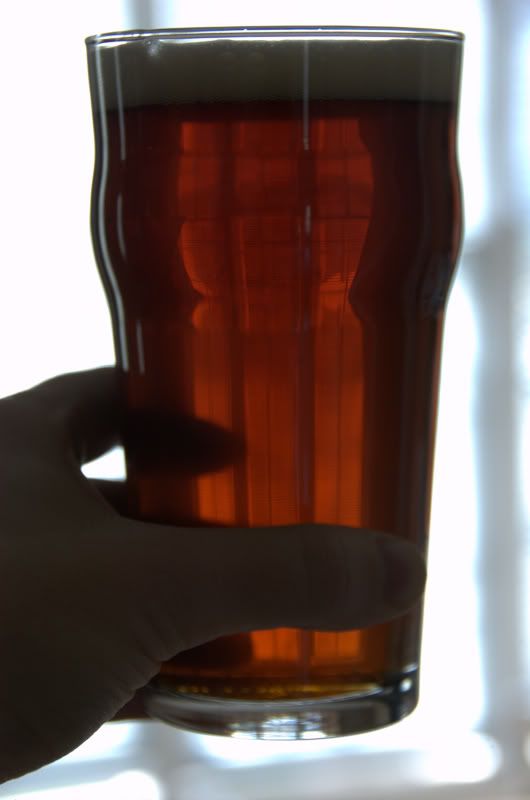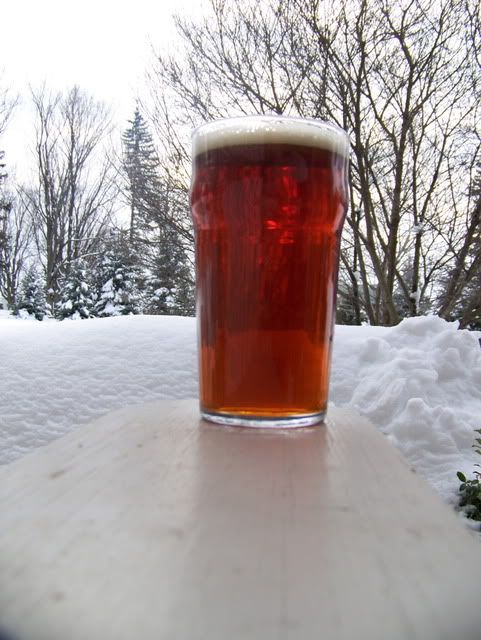Well I figured I would post the early results of my little experiment. For those who don't know, I originally pitched some 1187 into a split batch of a simple English bitter. One batch fermented at 68F for 14 days before a D-rest at 70F for another two. This beer was not cold crashed, it stayed at room temp until I 'kegged' it on day 17. However, the other batch was fermented for 10 days until the gravity had begun to stablilize and then I crash cooled it immediately. It remained in the fridge at 43-45F for a few days and was kegged by day 14. Both beers were 'kegged' in a "coors home draft" and carbonated with co2 cartridges to about 2 volumes.
Now for the results: Right off the bat, you can tell the two apart. The one that stayed at room temperature is much cleaner, with just a bit of pleasant diacetyl and some good malt flavor. It still is a bit young, but the malt and hops come through cleanly and well balanced. I don't think I would let this type of a beer sit on the yeast cake past day 21, as you really do lose a lot of malt/yeast character. In contrast, the batch that got cold crashed right as fermentation ended pretty much screams "British yeast." There is much more diacetyl present than the one that got the d-rest, though it's not so much that it reeks of butter. The malt/yeast profile on this one is also much more robust, you get a lot more of that biscuit/toasted malt character and the beer tastes much fresher overall.
In conclusion, I definitely think cold crashing after the bulk of fermentation has completed does make a big difference on the final beer. The cold crashed version has much more malt/yeast flavor, though at the same time isn't as clean tasting as the one that sat at room temperature. I'd say the overall balance of flavors favors the one that sat at room temp, though I still prefer the cold crashed one for its full flavored malt profile. Also, I find the cold crashed version to have more hop flavor/aroma too. My only complaint about the cold crashed version is the diacetyl. I think the way to get around this would be to pitch fresh yeast at bottling/kegging and allow the beer to clean up some of the diacetyl in the keg while at room temp for a few days. I am pretty happy with my results so far, though I think my normal English yeast fermentation schedule is right on target for getting both a clean tasting beer and one that won't lose those English malt and yeast flavors.
Coming up I plan on doing some more experimenting with fermenter geometry and open fermenting. I'll keep everyone posted.


































![Craft A Brew - Safale BE-256 Yeast - Fermentis - Belgian Ale Dry Yeast - For Belgian & Strong Ales - Ingredients for Home Brewing - Beer Making Supplies - [3 Pack]](https://m.media-amazon.com/images/I/51bcKEwQmWL._SL500_.jpg)

























